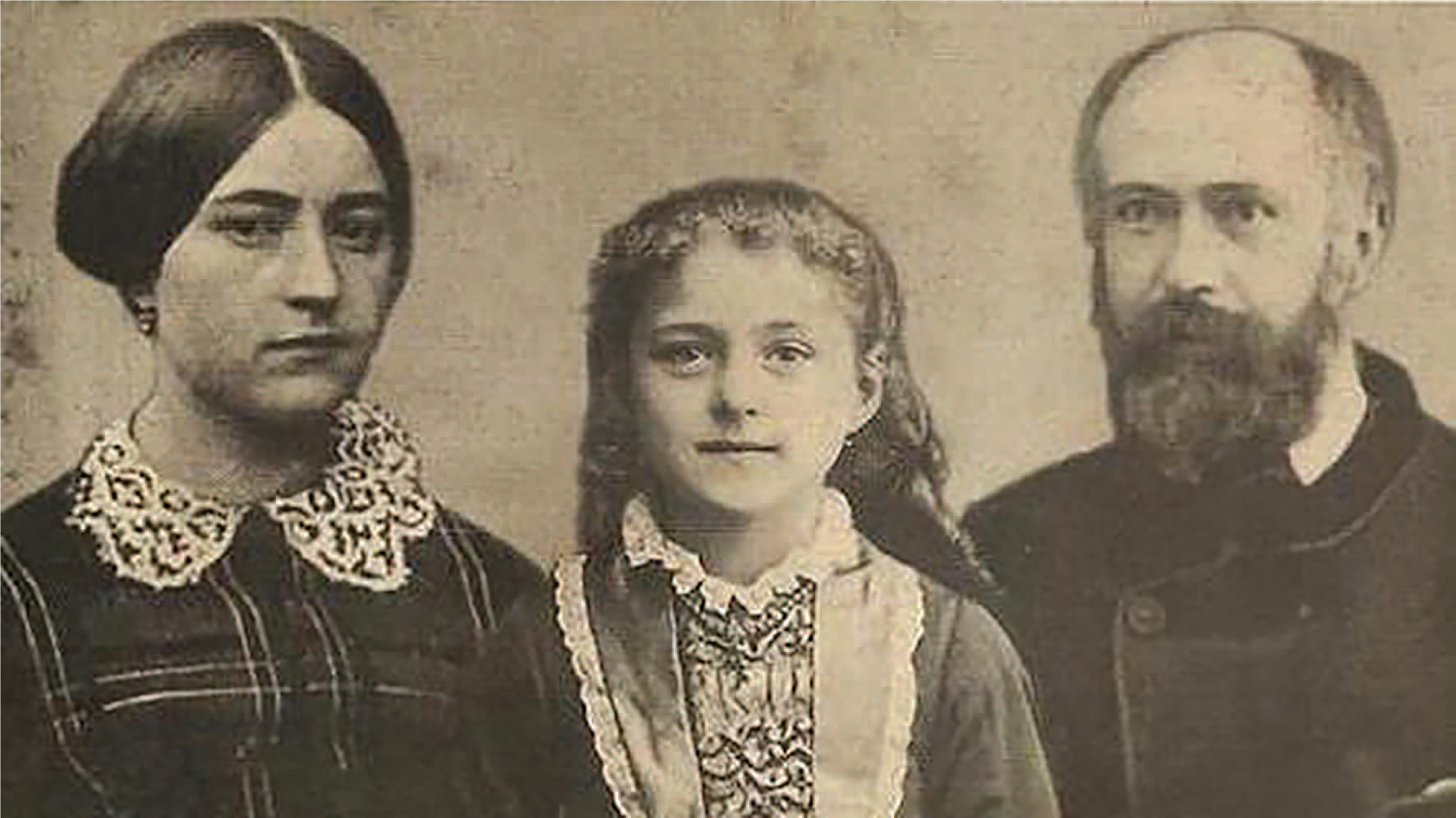St Thérèse of Lisieux, Patroness of the Missions
Pope Pius X1 declared St Thérèse the Universal Patroness of the Missions in 1927, ‘equal to St Francis Xavier, with all the rights and privileges that went with this title.’ How was this humble Carmelite, who died at twenty-four and who never left the enclosure of her Carmel, put on a par with Francis Xavier, renowned as the greatest missionary after St Paul?
We find the answer in Pope Francis’ letter, Baptised and Sent: The Church of Christ on Mission in the World, announcing this year’s Extraordinary Month of Mission in October. He writes, ‘I am a mission, always; you are a mission, always; every baptised man and woman is a mission.’
Mission is not primarily about what we do, but who we are; not so much about feet as about heart, and we know from Thérèse’s writings and life that she possessed a passionate missionary heart. Her missionary heart awakened with her Christmas ‘conversion’ in 1886. Like the stirring of dormant baptismal grace, she had a new awareness of being baptised and sent. A great sea change came over her: ‘He made me a fisher of men… I felt charity enter into my soul…’ (1) Seeing a picture of the Crucified, she exclaimed: ‘The cry of Jesus on the Cross sounded continually in my heart: ‘I thirst!’ These words ignited within me an unknown and very living fire. I wanted to give my Beloved to drink and I felt myself consumed with a thirst for souls.’
Years later in Carmel, we see that living missionary fire consuming her more powerfully than the deadly ‘consumption’ that was ravishing her young body. Tormented with desire to share her treasure, she longed to prove her love for Jesus in a thousand ways, by being all vocations at once. Among them, she exclaims: ‘I have the vocation of the Apostle. I would like to travel over the whole earth to preach Your Name and to plant Your glorious Cross on infidel soil. But O my Beloved, one mission alone would not be sufficient for me, I would want to preach the Gospel on all the five continents simultaneously and even to the most remote isles. I would be a missionary, not for a few years only but from the beginning of creation until the consummation of the ages.’
Her desires caused her ‘a veritable martyrdom’. How to reconcile them with the growing sense of her littleness? She found the answer in St Paul’s description of the Mystical Body. (1 Cor 12): ‘I understood that the Church had a Heart and that this Heart was BURNING WITH LOVE. I understood it w as Love alone that made the Church’s members act, that if Love ever became extinct, apostles would not preach the Gospel and martyrs would not shed their blood. I understood that LOVE COMPRISED ALL VOCATIONS, THAT LOVE WAS EVERYTHING, THAT IT EMBRACED ALL TIMES AND PLACES … IN A WORD, THAT IT WAS ETERNAL! At last I have found it … MY VOCATION IS LOVE! … in the heart of the Church, my Mother, I shall be LOVE.’
as Love alone that made the Church’s members act, that if Love ever became extinct, apostles would not preach the Gospel and martyrs would not shed their blood. I understood that LOVE COMPRISED ALL VOCATIONS, THAT LOVE WAS EVERYTHING, THAT IT EMBRACED ALL TIMES AND PLACES … IN A WORD, THAT IT WAS ETERNAL! At last I have found it … MY VOCATION IS LOVE! … in the heart of the Church, my Mother, I shall be LOVE.’
Astounding works are forbidden her, but she can love! Her life will be consumed by love, proved by works. We shouldn’t be put off by Thérèse’s deceptively childish language. She is eminently practical and seizes on the little opportunities that come the way of us all but which we often let slip by.
Thérèse’s ardent love knows how to mint on them, ‘…not allowing one little sacrifice to escape, not one look, one word. Profiting by all the smallest things and doing them through love. I desire to suffer for love and even to rejoice through love; and in this way I shall strew flowers before Your throne. I shall not come upon one without unpetalling it for You. While I am strewing my flowers, I shall sing…’
Recalling the saying of St John of the Cross: ‘…the smallest act of PURE LOVE is of more value to the Church than all other works together,’ Thérèse questions herself: ‘But is PURE LOVE in my heart? How can a soul as imperfect as mine aspire to the possession of the plenitude of Love? O Jesus, my first and only Friend, You whom I Love UNIQUELY, explain this mystery to me!’ Experiencing the darkest night of spirit, Thérèse, the great lover, scraped on the lintel of her cell door, her personal ‘shema’, ‘Jesus est mon unique amour’ – a powerful confession of pure love.
Towards the end of her Autobiography, Thérèse attests; ‘Your Love has gone before me, and it has grown with me, and now it is an abyss whose depths I cannot fathom. Love attracts love, and, my Jesus, my love leaps towards yours; it would like to fill the abyss which attracts it, but alas! it is not even like a drop of dew lost in the ocean! For me to love You as You love me, I would have to borrow Your own Love, and then only would I be at rest.’
Draw me! – a prayer burning with the fire of love – will now be her prayer, the simple means of accomplishing her mission. Eyes fixed on Jesus, she will draw all souls along with her. ‘Just as a torr ent, throwing itself with impetuosity into the ocean, drags after it everything it encounters in its passage, in the same way, O Jesus, the soul who plunges into the ocean of your Love, draws with her all the treasures she possesses. I ask Jesus to draw me into the flames of his love, to unite me so closely to him that he lives and acts in me…’ This love impels her to go forth in mercy, like Mary, to the ends of the earth. Thérèse reflects that the great saints who filled the world with the light of the Gospel understood this ‘divine science.’
ent, throwing itself with impetuosity into the ocean, drags after it everything it encounters in its passage, in the same way, O Jesus, the soul who plunges into the ocean of your Love, draws with her all the treasures she possesses. I ask Jesus to draw me into the flames of his love, to unite me so closely to him that he lives and acts in me…’ This love impels her to go forth in mercy, like Mary, to the ends of the earth. Thérèse reflects that the great saints who filled the world with the light of the Gospel understood this ‘divine science.’
She volunteers for Carmel in Hanoi, Vietnam, but becomes too ill. She ‘befriends’ the young Norman missionary, Théophane Vénard, martyred in Hanoi, whose picture she pinned to the curtain of her deathbed. Forgetting her own dreadful suffering, through encouraging letters, she lavishes tender care upon her missionary brothers, especially Maurice Bellière. She playfully tells Adolphe Roulland, that she is only a little zero which by itself has no value, but alongside one becomes potent, provided it is put on the proper side! Zero Thérèse will follow him by prayer and sacrifice. She burns to share her Little Way of confidence and love with ‘a legion of little souls.’ On the brink of death, she feels her mission is about to begin, ‘of making God loved as I love Him,’ of ‘spending my heaven doing good on earth, until all souls are saved…’
Within a few years, her Story of a Soul sweeps the world and her ’shower of roses’ falls on all five continents. She who so loved the snow miraculously intervenes and overnight makes fertile the sterile OMI mission among the Eskimo Inuits of Artic Canada. Another OMI priest recognises himself as the weary missionary for whom Thérèse had offered up her painful steps. Later, as Bishop Breynat, with his OMI confreres he spearheaded the move to have Thérèse declared Patroness of the Missions. The response was enthusiastic from apostolic vicars worldwide, who had experienced clear signs of Thérèse’s intercession. Pope Pius XI, the ‘Pope of the Missions,’ examined the evidence with delight. In a daring gesture, he declared Thérèse Patroness of the Mission, only two years after her canonisation.
She is a mission, always: Thérèse’s Mission continue: now her sacred relics encircle the world; they have even been taken into outer space! Baptised and sent, may we, like Thérèse, feel the call of an Apostle…
NOTE
1 The following quotation will help to clarify the significance of italics and capitals in the quotations from St Thérèse in this article: ‘Following the wishes of her superiors, Thérèse herself had written out the story of her brief life in ink and pencil, with few emendations, at odd moments as her health declined, on whatever paper was available (often of poor quality), and with no thought of eventual publication. Not surprisingly, as the facsimile edition reveals, the autograph is sometimes difficult to read, and shows countless variations in capitalisations, underlinings, the size, position, and slant of the letters, and so on (with some occasional corrections in a later hand). Because these variations could not be reproduced on a typeset page, Fr Francois- Marie* chose to represent all these indications of emphasis with italics, while capitalising those words the Saint had underlined two or three times.’ Story of A Soul, (Study Edition, translated by John Clarke OCD and prepared by Marc Foley OCD), Introduction. [*Critical text established by Fr Francois-Marie de Chassey in the 1956 facsimile edition of Manuscrits autobiographiques].
Sr Mary Brigeen Wilson OCD,
Kilmacud Carmel, Dublin
Download this page here: October Intercom 2019_featured article
